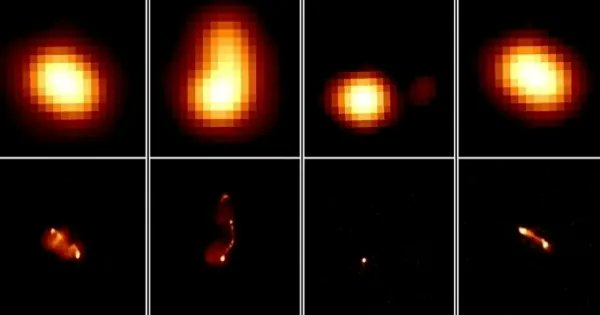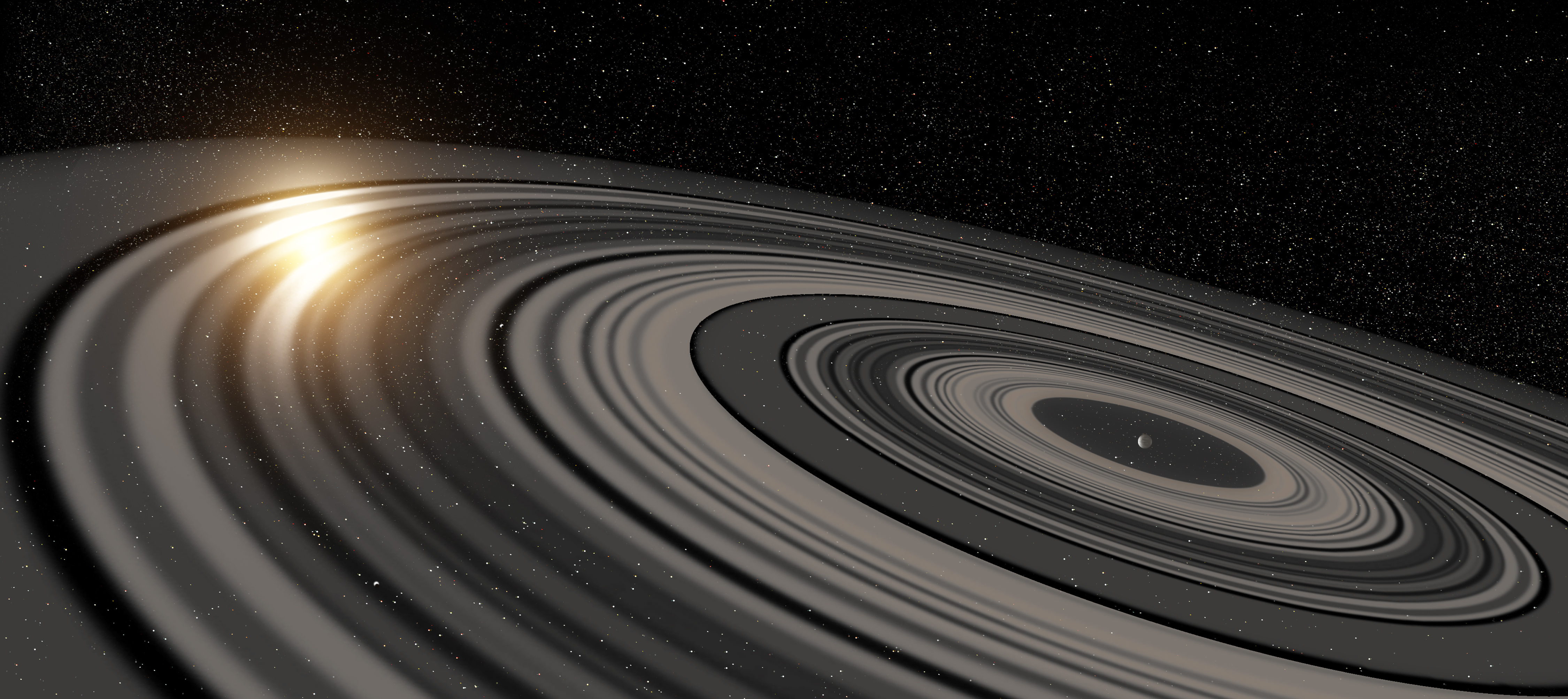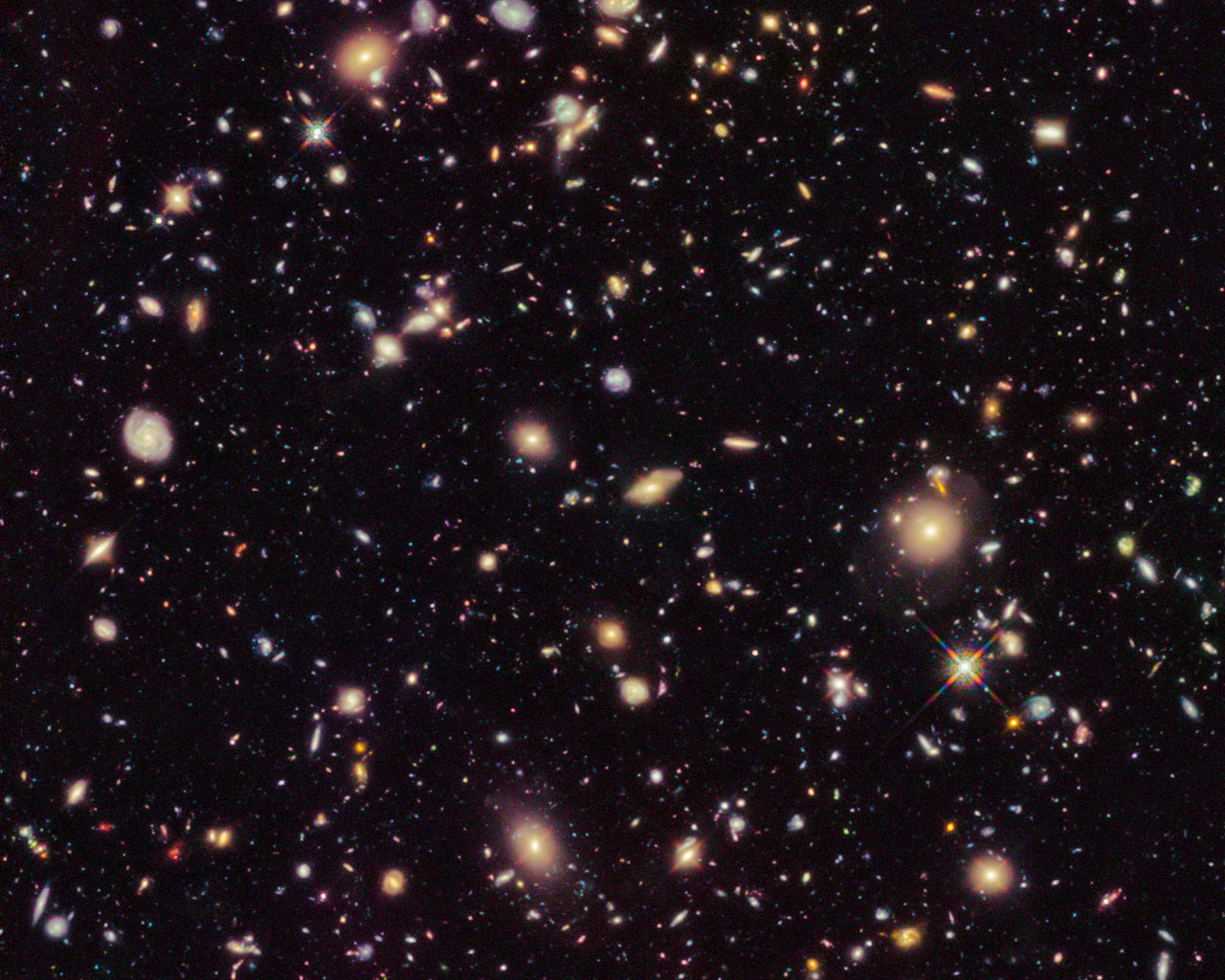With better computers comes more battery imagery. Or at least that’s true most of the time. Supercomputers are extraordinarily good at image processing, so it’s normally worth it when a new algorithm comes along that they can turn their attention to. That’s exactly what happened with an algorithm recently developed by Ph.D. student Frits Sweijen and his colleagues at Leiden University. They used several supercomputers’ image processing power to simulate and enhance the resolution of radio images captured by the International LOFAR telescope.
Continue reading “A Supercomputer Gives Better Focus to Blurry Radio Images”“Super Saturn” Has an Enormous Ring System and Maybe Even Exomoons
Astronomers watching the repeated and drawn-out dimming of a relatively nearby Sun-like star have interpreted their observations to indicate an eclipse by a gigantic exoplanet’s complex ring system, similar to Saturn’s except much, much bigger. What’s more, apparent gaps and varying densities of the rings imply the presence of at least one large exomoon, and perhaps even more in the process of formation!
J1407 is a main-sequence orange dwarf star about 434 light-years away*. Over the course of 57 days in spring of 2007 J1407 underwent a “complex series of deep eclipses,” which an international team of astronomers asserts is the result of a ring system around the massive orbiting exoplanet J1407b.
“This planet is much larger than Jupiter or Saturn, and its ring system is roughly 200 times larger than Saturn’s rings are today,” said Eric Mamajek, professor of physics and astronomy at the University of Rochester in New York. “You could think of it as kind of a super Saturn.”
The observations were made through the SuperWASP program, which uses ground-based telescopes to watch for the faint dimming of stars due to transiting exoplanets.
The first study of the eclipses and the likely presence of the ring system was published in 2012, led by Mamajek. Further analysis by the team estimates the number of main ring structures to be 37, with a large and clearly-defined gap located at about 0.4 AU (61 million km/37.9 million miles) out from the “super Saturn” that may harbor a satellite nearly as large as Earth, with an orbital period of two years.
Watch an animation of the team’s analysis of the J1407/J1407b eclipse below:
The entire expanse of J1407b’s surprisingly dense rings stretches for 180 million km (112 million miles), and could contain an Earth’s worth of mass.
“If we could replace Saturn’s rings with the rings around J1407b,” said Matthew Kenworthy from Leiden Observatory in the Netherlands and lead author of the new study, “they would be easily visible at night and be many times larger than the full Moon.”
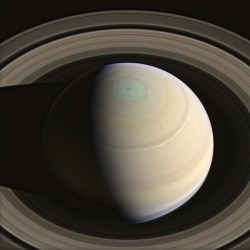
These observations could be akin to a look back in time to see what Saturn and Jupiter were like as their own system of moons were first forming.
“The planetary science community has theorized for decades that planets like Jupiter and Saturn would have had, at an early stage, disks around them that then led to the formation of satellites,” according to Mamajek. “However, until we discovered this object in 2012, no one had seen such a ring system. This is the first snapshot of satellite formation on million-kilometer scales around a substellar object.”
J1407b itself is estimated to contain 10-40 times the mass of Jupiter – technically, it might even be a brown dwarf.
Further observations will be required to observe another transit of J1407b and obtain more data on its rings and other physical characteristics as its orbit is about ten Earth-years long. (Luckily 2017 isn’t that far off!)
The team’s report has been accepted for publication in the Astrophysical Journal.
Source: University of Rochester. Image credit: Ron Miller.
Note: the originally published version of this article described J1407 at 116 light-years away. It’s actually 133 parsecs, which equates to about 434 light-years. Edited above. – JM
Did Old Galaxies Grow Up Quicker Than New Ones?
Did some of the oldest galaxies grow up quickly? That’s an intriguing possibility raised by a research team that found “mature” galaxies some 12 billion light years away, when the universe was less than 2 billion years old.
“Today the universe is old and filled with galaxies that have largely stopped forming stars, a sign of galactic maturity,” stated Caroline Straatman from the Netherlands’ Leiden University, a graduate student who led the research. “However, in the distant past, galaxies were still actively growing by consuming gas and turning it into stars. This means that mature galaxies are expected to be almost non-existent when the universe was still young.”
Using data from the Magellan Baade Telescope’s FourStar Galaxy Evolution Survey and combining with other observatories, researchers looked at the young universe using near infrared wavelengths and found 15 galaxies at an average of 12 billion light-years away. While the galaxies are faint using visual wavelengths, they were easy to spot in infrared — and hosted as many as 100 billion stars per galaxy, on average.
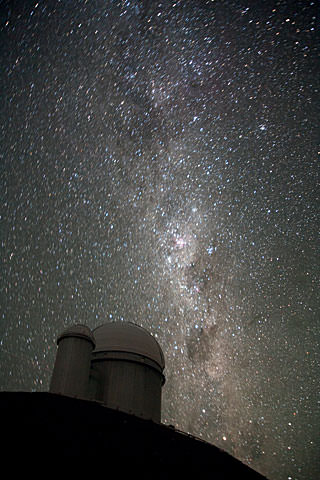
These galaxies each have a similar mass to the Milky Way, but stopped making stars when the universe was “only 12 percent of its current age”, researchers said. This implies that star-forming happened much more quickly in the past than right now, since the rate is estimated at several hundred times higher than what is observed in the Milky Way now.
It’s not clear what caused the rapid aging, but you can be sure researchers will look into this further. You can read the research in Astrophysical Journal Letters or in preprint version on Arxiv. Other databases used include Hubble’s Cosmic Assembly Near-infrared Deep Extragalactic Legacy Survey and the Great Observatories Origins Deep Survey.
Source: Netherlands Research School for Astronomy

